Supermarine Spitfire Mk IX D-Day Markings
Production Time 9 to 10 weeks
Shipment is by FedEx, UPS or DHL International Express Courier with a normal door-to-door delivery time worldwide of within 2-3 business days after dispatch. Due to the current volatility of world fuel prices, the amount mentioned here is our best estimate for DHL and UPS and may be subject to change at the time of shipping.

Model Description: Supermarine Spitfire Mk IX D-Day Markings Wood Replica Scale Custom Model Aircraft
Manufacturer: Supermarine
Wingspan: 17 Inches (43.2 Centimeters)
Height: 5.3 Inches (13.5 Centimeters)
Scale: 1:26
$239.50
Production Time 9 to 10 weeks
-
United States dollar ($)
-
Pound sterling (£)
-
Euro (€)
-
Australian dollar ($)
-
Canadian dollar ($)
-
Singapore dollar ($)
-
Swiss franc (CHF)
-
Japanese yen (¥)
-
Danish krone (kr.)
-
Hong Kong dollar ($)
-
Norwegian krone (kr)
-
Swedish krona (kr)
-
United Arab Emirates dirham (د.إ)
General Product Description
Our PlaneArts Supermarine Spitfire Mk IX D-Day Markings model exhibits unique, unrivaled quality and detailed design to come as close as possible to the accuracy of the actual plane. It comes as standard with a robust, durable base or stand which is available in a variety of different finishes designed to match your own personal requirements including solid wood, wood with polished metal supports or adjustable wood wall mount and will be ready within about 9-10 weeks from placement of order.
The Supermarine Spitfire Mk IX D-Day Markings model is made of the finest kiln dried renewable mahogany wood (commonly known as Lauan or Meranti) which has undergone many stages of carving and meticulous and careful sanding giving the beautiful, finished museum quality masterpiece. Many collectors and model connoisseurs demonstrate their preference for genuine handmade and hand painted mahogany wood models rather than plastic or die cast (diecast) alternatives due to the overall look and totally different feel of the item - we trust you will find the same. We can however, if required produce the same model in Solid Cast Resin so just click and contact us for further information. Our craftsmen and gifted artisans ensure that our finely handcrafted model airplanes match the precise blueprint details of the original aircraft. The paint scheme, markings and parts are closely matched, reflecting the original aircraft. This stylish top-quality desktop replica model will surely enthrall anyone who receives this as a gift and for sure one of the most appropriate and desirably collectable gifts for any military aviation enthusiast and avid aircraft collector whilst also displaying a perfect resemblance to the actual real life version.
There are many types of military propeller aircraft, but the basic types are bombers, fighters, fighter bombers, spotter planes, transporters, patrol aircraft, trainers, and reconnaissance and observation aircraft. All these types of aircraft are used for different types of missions. If you're a fan of historic or present-day military aviation, our model aircraft will bring the excitement and character of these aircraft right into your own home. You can order a wood airplane model of a North American B-25 Mitchell Bomber, a B17 - Flying Fortress, or a P-51 Mustang Nervous Energy V not forgetting the Bf 109, Spitfire, FW 190, A6M Zero, P-38 and F4U. These classic, propeller airplane models are of the highest quality. Each is individually crafted by our expert craftsmen. They produce handmade scale mahogany airplane models of the finest aircraft from World War I and II to present day biplanes and triplanes.
If you require, we can also make the Supermarine Spitfire Mk IX D-Day Markings model in any other military, government or even private livery or colour scheme you require and if necessary, in a different size or scale. Just click here to contact us with a description or photographs of what you require, and we will let you have a quotation for the necessary customization by return email. We can also make bespoke scale replicas of any other private / civil commercial airliner or airliners, helicopter, glider, gliders with engines, military jet, warplane jets, biplane, triplane, tail fin, spacecraft, rocket or NASA model you require in any airline, military or civilian livery or colors. We also produce model airships, blimps, dirigibles, blimps, boats, and ship collectibles. Wall plaque or seal for military, government or private customers. Again, by clicking here to contact us just let us know exactly what you need.
Unveiling History: Supermarine Spitfire Mk IX D-Day Markings
As the allied forces prepared for the pivotal invasion of Normandy on June 6, 1944, every element of the military machine was meticulously planned, including the aerial support crucial for the success of Operation Overlord. Among the iconic aircraft of World War II, the Supermarine Spitfire stood out not only for its performance but also for the symbolic significance it held for the British people. One variant, the Spitfire Mk IX, played a vital role in the D-Day landings and bore distinctive markings that reflected the spirit of the momentous day.
The Spitfire Mk IX: A Legend Takes Flight
The Spitfire Mk IX was a testament to British engineering ingenuity and adaptability. Born out of the necessity to counter the Luftwaffe’s formidable Focke-Wulf Fw 190, it combined the proven airframe of earlier Spitfire models with the more powerful Merlin 60 series engine. This marriage of airframe and engine resulted in a highly versatile fighter capable of taking on the best that the Axis powers had to offer.
Introduced in 1942, the Mk IX quickly became one of the most widely used variants of the Spitfire throughout the remainder of the war. Its superior performance at high altitudes made it invaluable for escorting bombers deep into enemy territory, as well as engaging in dogfights with enemy fighters.
Preparation for D-Day: Special Markings
As the Allies geared up for the invasion of Normandy, meticulous planning went into every aspect of the operation, including the markings of the aircraft involved. The Spitfire Mk IXs that would participate in supporting the invasion forces received special markings to ensure easy identification and coordination amidst the chaos of battle.
One of the most distinctive features of the D-Day Spitfires was the application of invasion stripes. These alternating black and white bands were painted on the wings and fuselage of the aircraft to minimize the risk of friendly fire incidents during the invasion. The high visibility markings served as a visual recognition aid for ground troops and other aircraft, helping to prevent accidental attacks on allied forces.
In addition to invasion stripes, some Spitfire Mk IXs bore other markings to signify their role in the D-Day operations. This could include squadron codes, unit insignias, or individual aircraft markings. Each of these elements contributed to the overall identification and organization of the allied air forces on D-Day.
The Role of the Spitfire on D-Day:
On the morning of June 6, 1944, as the largest amphibious assault in history unfolded on the beaches of Normandy, Spitfire Mk IXs took to the skies in support of the allied ground forces. Their missions varied widely, ranging from strafing enemy positions and providing close air support to reconnaissance and escort duties.
Throughout the day, Spitfire pilots engaged in intense aerial combat with the Luftwaffe, striving to gain and maintain air superiority over the battlefield. Their efforts helped to pave the way for the success of the allied landings and contributed to the eventual liberation of Western Europe from Nazi occupation.
Legacy and Remembrance:
The Supermarine Spitfire Mk IXs that flew on D-Day left an indelible mark on history, not only for their role in the invasion but also for the symbolism they carried as representatives of British resolve and allied unity. The distinctive markings they bore serve as a poignant reminder of the sacrifices made on that fateful day and the courage of those who took to the skies to secure victory.
Today, the legacy of the Spitfire lives on as a symbol of freedom and defiance in the face of tyranny. Restored examples can be found in museums and airshows around the world, ensuring that future generations will continue to remember and honor the bravery of those who flew them into battle on D-Day and throughout World War II.
| Weight | 6 kg |
|---|---|
| Dimensions | 13.8 × 17 × 5.3 in |



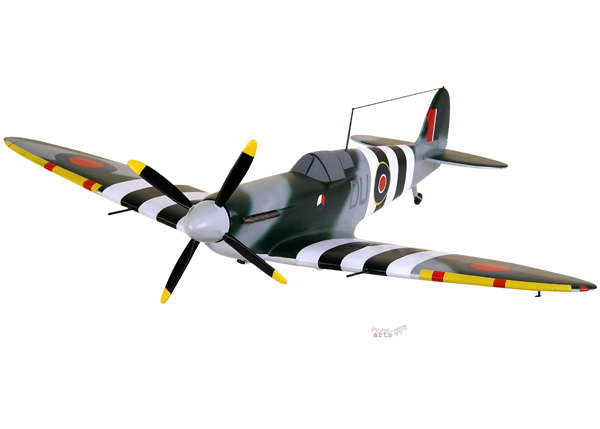
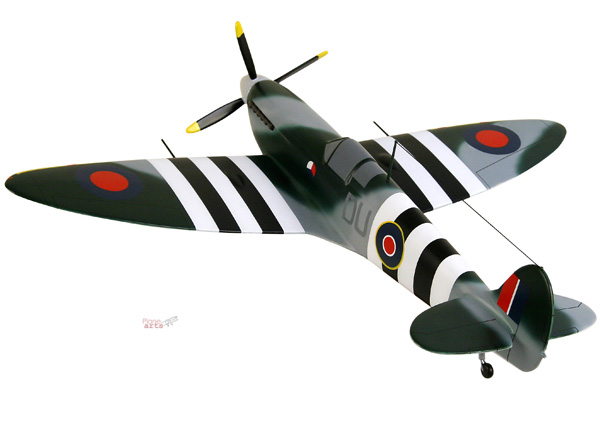
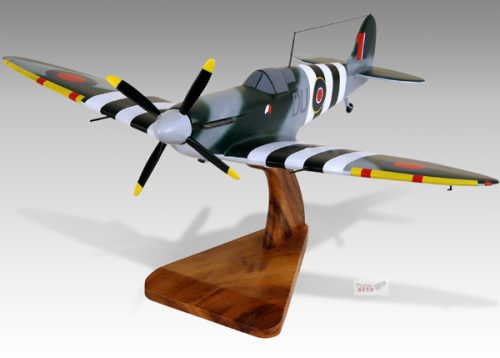
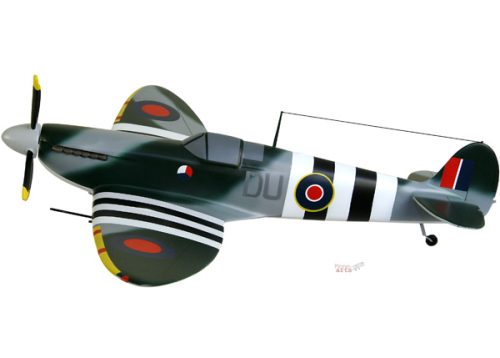



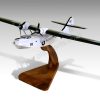
Reviews
There are no reviews yet.